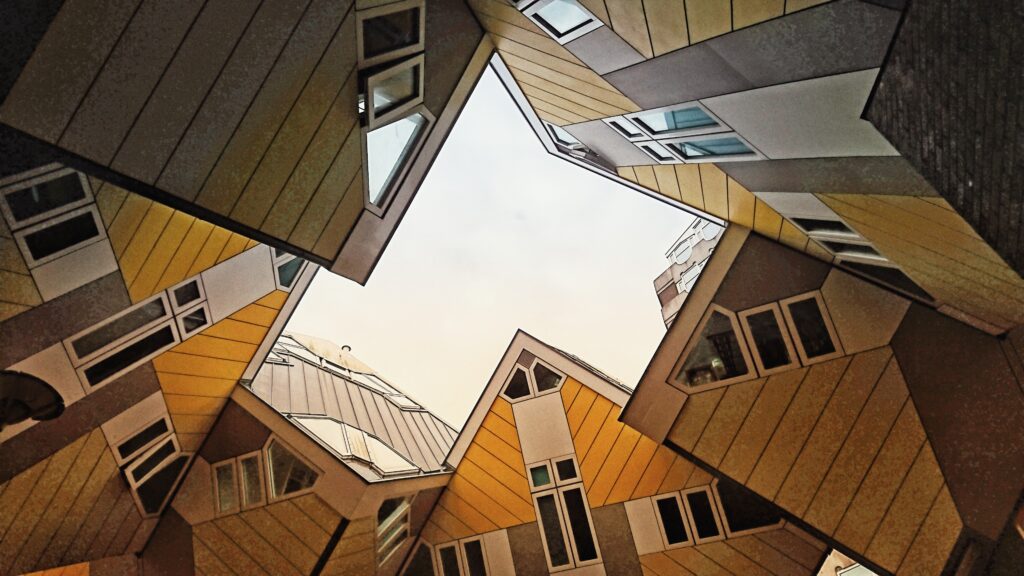Interior in inferiority?

Returning to the question of who am I writing for?—by understanding the depth and nature of the inferiority complex in the interior field, I realize that to sustain this blog, I need a motivation greater than myself. Not just about maintaining a personal hobby; this is essential for shaping the direction of my future research. I still remember in the final years of my Bachelor’s program in Interior Design when my curiosity about the power of spatial design drove me to challenge the conventional boundaries defining an interior space. As my inclination toward conceptual thinking was met with the indifference and rejection from the lecturers, I was convinced that choosing interior design as my field of study had been a great mistake.
However, looking back a decade later, I see that all those seemingly personal doubts and concerns actually reflect key milestones in the process of challenging and reshaping the fundamental values of interiors as a ‘slippery discipline’ (Attiwill, 2018). The launch of the Interiority Journal in 2018 has provided a platform for the emergence of new concepts in reinterpreting interiority, including urban interior, interior urbanism, and urban interiority. This ongoing process was also the central theme of an international symposium titled Interior – inferior – in theory? Contemporary positions in interior design theory held in Berlin, Germany, in 2018. The symposium brought together prominent theorists and educators from the field of interior architecture and design worldwide to discuss how to position the discipline and its future development in relation to architecture specifically, and the built environment as a whole.
Quay trở lại câu hỏi về việc viết CHO AI, khi nhận thức được mức độ sâu rộng và căn nguyên của sự tự ti trong chuyên ngành nội thất, tôi hiểu rằng để duy trì blog cá nhân này, tôi cần một động lực to lớn hơn bản thân. Đây không chỉ là vấn đề duy trì một sở thích cá nhân mà còn đóng vai trò quyết định trong việc định hướng con đường nghiên cứu của tôi trong tương lai. Tôi vẫn còn nhớ vào những năm cuối bậc cử nhân (chương trình Thiết kể Nội thất) khi sự tò mò về sức mạnh của việc thiết kế không gian đã thôi thúc tôi thách thức những giới hạn truyền thống trong định nghĩa về một không gian nội thất. Khi khuynh hướng tư duy trừu tượng của tôi phải đối diện với sự thờ ơ và phủ nhận từ những giảng viên trong khoa, tôi đã tin rằng thiết kế nội thất là một sai lầm to lớn của tôi.
Thế nhưng, 10 năm sau khi nhìn lại, tôi nhận ra tất cả những ngờ vực trăn trở tưởng chừng như rất cá nhân đó lại phản ánh chính xác những cột mốc quan trọng trong quá trình vận động và tái định hình những giá trị cốt lõi của chuyên ngành nội thất như một ‘slippery discipline’ (Attiwill, 2018). Sự ra đời của tạp chí khoa học Interiority năm 2018 đã cung cấp một diễn đàn trao đổi và chứng kiến sự ra đời của những khái niệm mới trong nỗ lực tái diễn giải khái niệm ‘interior’ như: urban interior, interior urbanism, and urban interiority. Quá trình này cũng đã trở thành chủ đề chính cho một hội thảo quốc tế chuyên ngành Interior – inferior – in theory? Contemporary positions in interior design theory tổ chức tại Berlin, Đức năm 2018. Hội thảo quy tụ những nhà nghiên cứu lý luận và chuyên gia giáo dục nổi bật trong lĩnh vực interior trên khắp thế giới để thảo luận về cách định vị và tương lai phát triển của chuyên ngành nội thất trong mối quan hệ với kiến trúc nói riêng và môi trường xây dựng nói chung.
